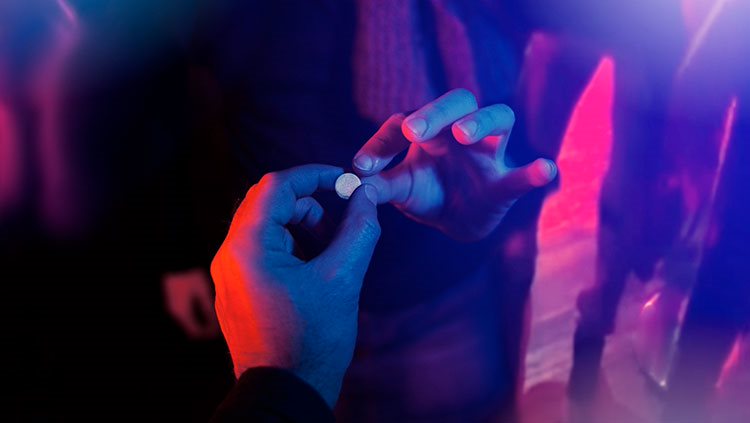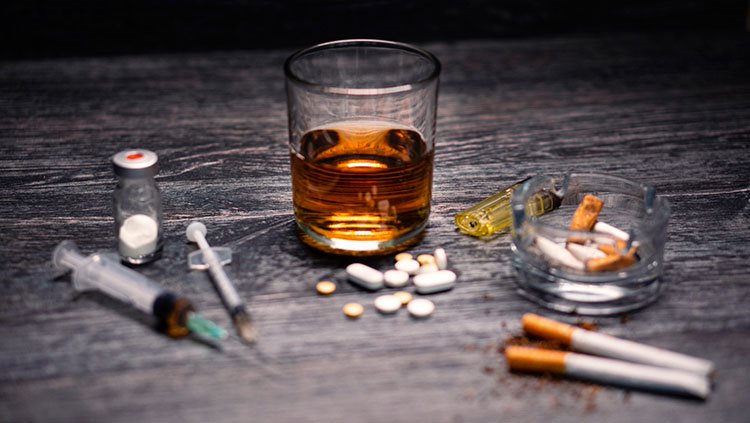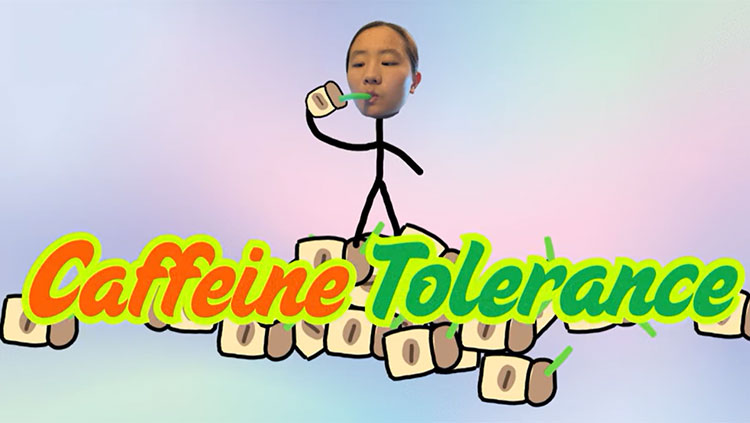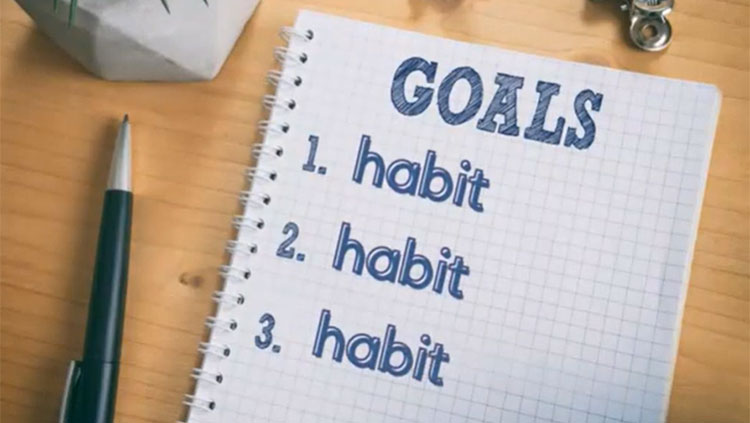Risky Recreation: Designer and Club Drugs
- Reviewed16 Feb 2023
- Author Alison Davis
- Source BrainFacts/SfN

Some drugs are more commonly known to be used in recreational contexts outside of their legal use. And not all these drugs are made the same.
Designer drugs such as “bath salts” and “spice” (synthetic marijuana) are synthetic legal substances with psychoactive effects. They look like illicit drugs but can often be bought legally because the people who make them continually tweak their chemical structures to evade drug laws. We now know that these drugs can cause serious, permanent damage in many brain regions. Like designer drugs, club drugs are also synthetic psychoactive substances that look like legal drugs and are named for their use at dance parties and all-night raves in crowded, high-energy surroundings. Examples of club drugs include 3,4-methylenedioxy-methamphetamine (also known as MDMA, ecstasy, or molly), rohypnol (“roofies”), GHB (gamma hydroxy-butyrate), and ketamine. Designer and club drugs can be stimulants — such as ecstasy — or depressants like rohypnol, GHB, and ketamine.
Ecstasy is a widely used recreational drug with similarities to both the stimulant amphetamine and the hallucinogen mescaline, which occurs naturally in the peyote cactus and has effects similar to lysergic acid diethylamide (LSD). When swallowed, ecstasy works within 30 to 45 minutes, and its effects last for several hours. It initially boosts levels of neurotransmitters, especially serotonin, then temporarily depletes their levels in the synapses. Chronic ecstasy use leads to long-term changes in areas of the brain critical for thought, memory, and pleasure. Researchers think this harm is a result of long-term damage to serotonin circuits.
Rohypnol and GHB are both depressants, and mimic benzodiazepines like Valium. They are also known as “date-rape” drugs, as people have used them to facilitate sexual assault by slipping pills into drinks, sedating and incapacitating unsuspecting victims. Ketamine is also a depressant that is legally used as a veterinary anesthetic. When used recreationally, ketamine takes effect within about 10 minutes, putting users in a trance-like state. Its hallucinogenic effects last one to two hours. Recently, scientists have found a totally unexpected use for ketamine: treating depression. Ketamine alters signaling of the neurotransmitter glutamate, a non-traditional target for antidepressant medications. Perhaps most interesting are its very rapid effects, which occur within minutes to hours instead of the weeks required for other current antidepressant treatments. For this reason, neuroscientists consider ketamine a potential breakthrough, especially in people for whom no other treatments have been effective.
Adapted from the 8th edition of Brain Facts by Alison Davis.
CONTENT PROVIDED BY
BrainFacts/SfN
References
American Lung Association. (2017). What's In a Cigarette? http://www.lung.org/stop-smoking/smoking-facts/whats-in-a-cigarette.html
Baumann, M. H., Solis, E., Jr, Watterson, L. R., Marusich, J. A., Fantegrossi, W. E., & Wiley, J. L. (2014). Baths salts, spice, and related designer drugs: the science behind the headlines. The Journal of Neuroscience. 34(46), 15150–15158. https://doi.org/10.1523/JNEUROSCI.3223-14.2014
Centers for Disease Control and Prevention & National Center for Injury Prevention and Control. (2017). Understanding Drug Overdoses and Deaths. https://www.cdc.gov/overdose-prevention/about/understanding-the-opioid-overdose-epidemic.html
Garnier-Dykstra, L. M., Caldeira, K. M., Vincent, K. B., O'Grady, K. E., & Arria, A. M. (2012). Nonmedical use of prescription stimulants during college: four-year trends in exposure opportunity, use, motives, and sources. Journal of American College Health. 60(3), 226–234. https://doi.org/10.1080/07448481.2011.589876
National Institute on Drug Abuse. (2015). The science behind designer drugs. https://archives.drugabuse.gov/news-events/latest-science/science-behind-designer-drugs
National Institute on Drug Abuse. (2017). Cannabis (Marijuana) DrugFacts. https://www.drugabuse.gov/publications/drugfacts/marijuana
National Institute on Drug Abuse. (2017). Cannabis (Marijuana) Research Report: Is marijuana safe and effective as medicine? https://www.drugabuse.gov/publications/drugfacts/marijuana-medicine
National Institute on Drug Abuse. (2017). Commonly Used Drugs Charts. https://www.drugabuse.gov/drugs-abuse/commonly-abused-drugs-charts
National Institute on Drug Abuse. (2017). Drugs, Brains, and Behavior: The Science of Addiction.
Drugs and the Brain. https://www.drugabuse.gov/publications/drugs-brains-behavior-science-addiction/drugs-brain
National Institute on Drug Abuse. (2017). Heroin DrugFacts. https://www.drugabuse.gov/publications/drugfacts/heroin
National Institute on Drug Abuse. (2017). Methamphetamine DrugFacts. https://www.drugabuse.gov/publications/drugfacts/methamphetamine
National Institute on Drug Abuse. (2018, July 2). The Science of Drug Use and Addiction: The Basics. https://archives.drugabuse.gov/publications/media-guide/science-drug-use-addiction-basics
National Institute on Alcohol Abuse and Alcoholism. (2017). Alcohol Facts and Statistics. https://www.niaaa.nih.gov/alcohols-effects-health/alcohol-topics/alcohol-facts-and-statistics
What to Read Next
Also In Diet & Lifestyle
Trending
Popular articles on BrainFacts.org



















